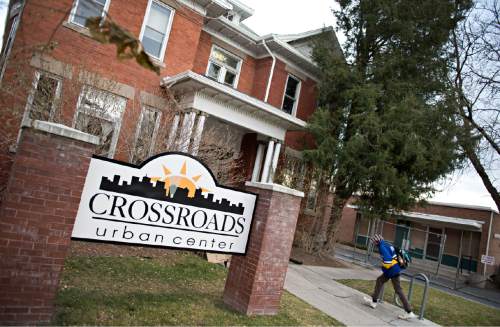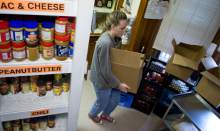This is an archived article that was published on sltrib.com in 2015, and information in the article may be outdated. It is provided only for personal research purposes and may not be reprinted.
The recipe for solving homelessness must, of course, include housing.
The Crossroads Urban Center on Thursday unveiled an initiative that seeks to get the homeless back in housing quickly, while increasing funds for service providers that already are up and running.
The $30 million proposal comes as Mayor Ralph Becker's commission on homeless providers is determining whether to move the Road Home shelter from Rio Grande Street. At the same time, a separate commission under the guidance of Salt Lake County Mayor Ben McAdams is analyzing the efficiency of funding mechanisms for service providers and their clients.
The Crossroads' plan, called Our City Leads, considers both short-term needs and long-term solutions, said Executive Director Glenn Bailey.
The nonprofit group proposes the City Council put before voters a $30 million general obligation bond to pay for a range of measures.
Short-term solutions would cost $5 million to $10 million and include permanently closing Rio Grande Street from 200 South to 300 South in an effort to increase safety for homeless clients, create more room for service providers and cut down on drive-by drug trafficking.
Near-term solutions also include expanding shelter-to-housing programs, such as "rapid re-housing," as well as doubling the number of jail diversion beds at the Salt Lake County detox center.
By contrast, the proposal's long-range solutions call for $16 million to be spent on 800 units of permanent supportive housing. That figure is 20 percent of the overall cost of the housing, the group said, with the rest funded through federal tax credits, as well as state and local contributions.
The plan also calls for $10 million to build a new shelter for women and children, away from existing shelters.
The initiative also outlines a $4 million rejuvenation of the Road Home and Weigand Center.
"It's foolish to move them," Bailey said of the existing facilities. "But we would like to see them renovated."
Not least, the plan calls for a permanent low-income housing task force that would continually seek funds for housing to alleviate homelessness.
Presently, Salt Lake City lacks about 8,000 units of affordable housing, according to a 2013 study.
"Solving this housing gap will require a combination of creative financing, incentives for developers, and new housing policies," Bailey said. "It will not happen without sustained effort and can't be solved by Salt Lake City alone."
Salt Lake City Council Chairman Luke Garrott said Thursday afternoon that he liked the Crossroads plan.
"This is good timing," he said. "This is an important proposal in context of the other processes that are presently going on."
The council is slated to get updates on homeless issues Oct. 6.
"The focus should be on housing and the supportive services to keep people off the street," Garrott said in a nod of support to the plan's 800 units of permanent supportive housing.
It's too early to say whether the council would approve such a $30 million ballot measure, Garrot noted.
"But if the solutions to homelessness remain to be a priority for Salt Lake City residents," he said, "I think they would support a bond like this."







